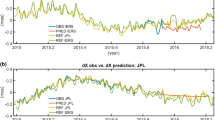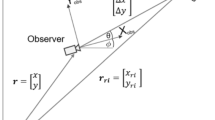Abstract
The nonlinear problem of tracking and predicting where a satellite will be over some time can be difficult with the recognition of modeling error and ground site radar tracking errors. For this reason it is important to have an accurate modeling program with the fidelity to correct for any errors in orbital motion and predict the most accurate positioning at some future time. The Extended Kaiman Filter is one such program that can accurately determine position over time given estimate ranges for sources of error. However, the Extended Kaiman Filter contains many linear approximations that allow its prediction and correction methods to work. This paper will discuss the effects of replacing the linearizing approaches made in the orbital model part of the program with numerical small-step approaches. The overall errors during prediction will be compared for an analysis of the corrective ability of the filter. Additionally a final prediction at a later date and another location will serve as an indicator to the usefulness of the prediction capabilities over time.
In exploring these effects, it will be shown that the linearizing approximations made in the development are a good approximation to the numerical results. The effects of modeling error, perturbation effects included, and the degree of approximation all play a significant role in accuracies of prediction. The effects of removing linearizations are small in comparison to the effects of perturbations and modeling error. The results of the numerical approximations contain a great robustness and as such help simplify the modeling process. The modeling process is discussed with reference to ADA program code. With these results it can be seen that there are several methods of using the Extended Kaiman Filter for orbital prediction which maintain a high degree of accuracy and can be very useful when applied to real-world satellite prediction.
Similar content being viewed by others
References
VERGEZ, P. L. “Lyapunov Stability Analysis of an Orbit Determination Problem,” The Journal of the Astronautical Sciences, Vol. 45, No. 2, April–June 1997, pp. 233–245.
VALLADO, D. A. Fundamentals of Astrodynamics and Applications, Space Technology Series, McGraw Hill, 1997.
BATE, R. R., MUELLER, D. D, WHITE, J. E. Fundamentals of Astrodynamics, Dover Publications, Inc., New York, NY, 1971.
RIGGS, JR., T. L. and VERGEZ, P. L. “Advanced Air-To-Air Missile Guidance Using Optimal Control And Estimation,” AFATL-TR-81-56 Defense Technical Information Center, Eglin AFB, Florida, 1981.
SELLERS, J. J. Understanding Space: An Introduction to Astronautics, McGraw-Hill, Inc., New York, NY, 1994.
The Analytic Sciences Corporation “Applied Optimal Estimation,” Gelb, Arthur, editor, 1974.
WELSH, G. and BISHOP, G. “An Introduction to the Kaiman Filter,” TR 95-041, Department of Computer Science, University of North Carolina at Chapel Hill, Chapel Hill, NC, 2001.
Author information
Authors and Affiliations
Corresponding author
Rights and permissions
About this article
Cite this article
Vergez, P., Sauter, L. & Dahlke, S. An Improved Kaiman Filter for Satellite Orbit Predictions. J of Astronaut Sci 52, 359–380 (2004). https://doi.org/10.1007/BF03546368
Published:
Issue Date:
DOI: https://doi.org/10.1007/BF03546368




